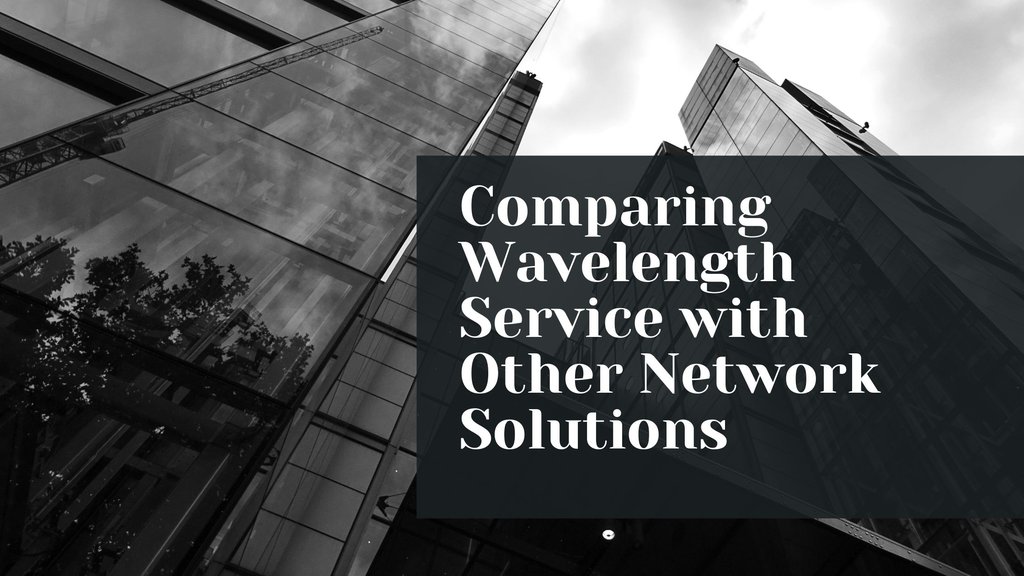In the current digital environment, choosing the appropriate network solution is essential for companies looking to improve connectivity and performance. In particular, wavelength service is a strong choice for enterprises with large data requirements. Is this state-of-the-art technology the appropriate fit for you? It provides a powerful substitute for conventional network solutions. This blog article examines wavelength service, including its advantages, methods of operation, and comparisons with MPLS, Ethernet, and SD-WAN.
Understanding Wavelength
What is Wavelength Service?
A high-speed data transmission technique known as wavelength service employs dedicated bandwidth over fibre optic connections. Dense Wavelength Division Multiplexing (DWDM) technology allows for the simultaneous transmission of many data channels on a single optical fibre, resulting in high capacity and low latency. This novel method outperforms conventional networking by providing increased security and effectiveness for long-distance data delivery. Wavelength service offers the power of data surfing on light beams over fibre optic lines. In contrast to networks that rely on electricity, this technology offers unmatched speed and security.
How Does Wavelength Service Work?
Through fibre-optic lines, wavelength services send data in the form of light signals. Dense Wavelength Division Multiplexing (DWDM) allows for the simultaneous transmission of many data channels, each given a different wavelength, hence optimizing capacity. This method entails:
- Transmission: Over extended distances, optical fibres allow light signals to move with little signal loss.
- Optical amplifiers are used for signal strengthening to preserve data integrity over long-distance networks.
- Network Topology: Performance and dependability can be maximized by using flexible designs, such as point-to-point connections.
Picture a rainbow created by sunlight splitting. Similar work is done with data by wavelength service. It uses a single fibre optic connection to transmit several data streams, each with a distinct color (or wavelength). Your information is now connected via a superhighway.
Benefits of Wavelength Service
Wavelength service delivers exceptional performance with several key benefits:
- High Bandwidth: Supports speeds from 1 Gbps to 100 Gbps, ideal for demanding applications.
- Low Latency: Minimal delays due to direct optical transmission, perfect for real-time operations.
- Enhanced Security: Independent data channels protect sensitive information.
- Scalability: Easily adjust bandwidth as your needs grow without major infrastructure changes.
Experience a network revolution with wavelength service. Enjoy blazing-fast speeds, minimal latency, and robust security for your data
Wavelength Service vs. Other Network Solutions
Now that you know the power of wavelengths, let's see how it compares to other popular options:
Wavelength Service vs. MPLS
In several important situations, wavelength service performs better than multiprotocol label switching (MPLS). It is perfect for demanding applications since it offers lower latency and faster throughput. Furthermore, wavelength solutions scale more effectively to meet increasing bandwidth needs. Although MPLS gives flexibility, wavelength service frequently offers a more affordable option for high-capacity requirements. Wavelength service essentially provides high-bandwidth connections that are dedicated and have predictable performance, but MPLS can be more expensive and prone to congestion, especially when massive data transfers are involved.
Wavelength Service vs. Ethernet
In numerous important areas, wavelength service is significantly superior to standard Ethernet. Because of the speed at which light travels, it provides significantly greater bandwidth and reduced latency. Wavelength services are superior in long-haul communication without signal degradation compared to Ethernet, which is dependable across shorter distances. In summary, demanding applications may find Ethernet's bandwidth constraints to be a bottleneck, but wavelength service offers the high rates required for cloud-based and high-performance computing.
Wavelength Service vs. SD-WAN
Depending on the needs of the network, Software-Defined Wide Area Network (SD-WAN) and wavelength service provide different benefits. Although SD-WAN offers flexibility via dynamic routing and management, wavelength service is the most dependable and performant option for dedicated links. For sophisticated networks that need intelligent routing, SD-WAN may be more affordable; nevertheless, wavelength service is frequently more cost-effective for high-capacity, low-latency applications. In the end, wavelength service is the better option for demanding applications needing specialized high-performance connections, whereas SD-WAN is best for network agility.
Use Cases for Wavelength Service
High-Performance Computing (HPC)
Wavelength service for High-Performance Computing (HPC) applications provides extremely fast data transfer and low latency, wavelength service is an ideal fit. Complex computations and data-intensive applications are accelerated by the dedicated, high-bandwidth connections it offers. This enables businesses to quickly process and analyze large data sets to fully realize their potential.
Disaster Recovery
Wavelength service for disaster recovery provides high-performance, secure communication between primary and backup sites, making it an effective disaster recovery solution. This guarantees quick data recovery and replication, reducing downtime in urgent circumstances.
Select the Right Network Solution
When choosing the best network solution, it's important to carefully evaluate the following factors:
- Application Requirements: Determine the precise latency, bandwidth, and performance requirements of your apps. Do you require flexible networks or fast data transfer?
- Budget: Consider all costs associated with various options, including one-time and recurring expenditures. Although wavelength service performs better than other solutions, it can be more expensive.
- Network Infrastructure: Examine your current setup to ascertain integration needs and compatibility. Does the network infrastructure you currently have support fibre optic cables?
Although wavelength service may be more expensive, it offers remarkable performance. Applications requiring fast speed and minimal latency should use it. On the other hand, alternative approaches can be less expensive but offer less flexibility at the expense of performance. Make sure you assess your needs carefully to make an informed choice.
A thorough assessment of your unique requirements is necessary to fully realize the potential of your network. You may make an informed choice by evaluating wavelength service against alternative network options and considering elements like infrastructure, budget, and application needs. Wavelength service is a standout option for businesses that want unmatched dependability, security, and speed. Its outstanding ability to provide high bandwidth and low latency makes it the perfect choice for mission-critical operations and data-intensive applications.
In ultimately, a successful network is essential to corporate success. By giving your company access to a dedicated, high-performance connection that can greatly expand its possibilities, Wavelength service presents a compelling advantage.





